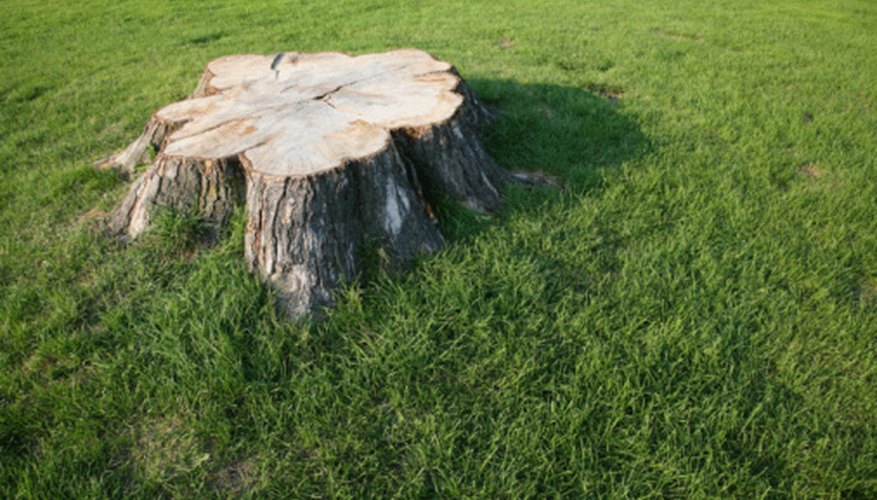After you have cut down a tree, an unsightly stump will remain. Typically difficult to get rid of, stumps provide an ideal location for pests such as bees and snakes to live and thrive. Furthermore, an unused stump takes up valuable yard space. Various DIY stump removal options will stop stump growth and slowly kill it over time. An inexpensive and relatively easy method, painting the stump with herbicide will effectively stop stump growth.
- After you have cut down a tree, an unsightly stump will remain.
- An inexpensive and relatively easy method, painting the stump with herbicide will effectively stop stump growth.
Choose a calm day when no rain is in the forecast. Wear a pair of rubber gloves and safety goggles to prevent possible skin and eye irritation caused by the chemical.
Pour 1/2 to 1 cup of brush-killer herbicide containing triclopyr or glyphosate in a plastic bucket. The herbicide will inhibit growth and eventually kill the tree stump.
Dip the bristles of a paintbrush in the bucket until saturated. Paint the herbicide liberally on the freshly cut tree stump until completely covered. Re-cut a few inches off old stumps before applying the herbicide. Coat the stump's ring of cambium thoroughly with the herbicide.
- Pour 1/2 to 1 cup of brush-killer herbicide containing triclopyr or glyphosate in a plastic bucket.
- Paint the herbicide liberally on the freshly cut tree stump until completely covered.
Clean the paintbrush and plastic bucket with cool running water and let dry. Wash hands thoroughly with warm, soapy water to remove any traces of the herbicide.
Repeat the process at least once a week to prevent stump growth and kill the stump. Several applications are necessary for the stump to die.
TIP
Read and follow all directions printed on the herbicide's instructions.
WARNING
Do not allow the herbicide to come in contact with wanted vegetation. Doing so could kill the plants, grass and trees.
